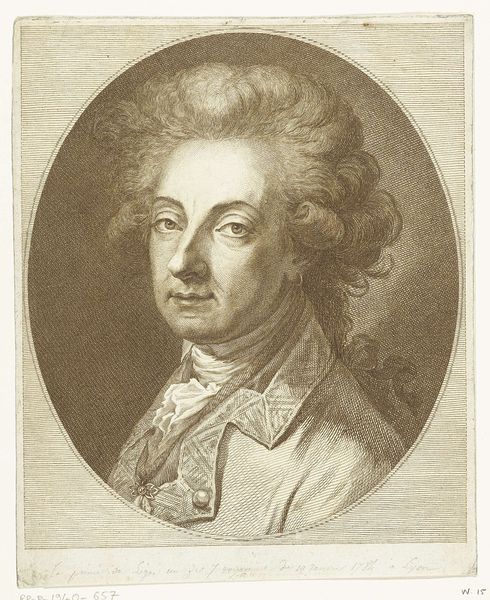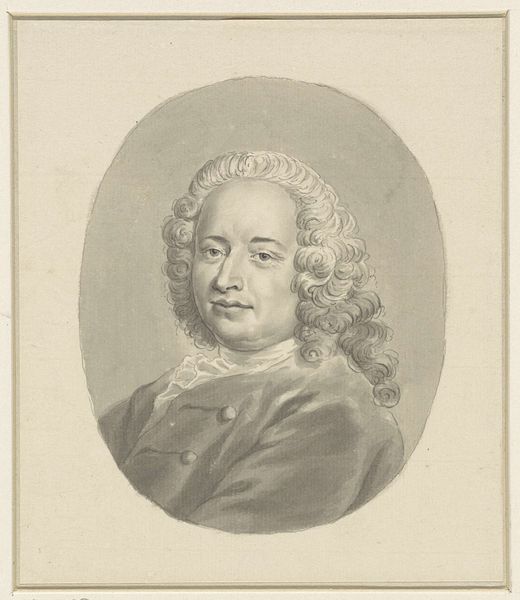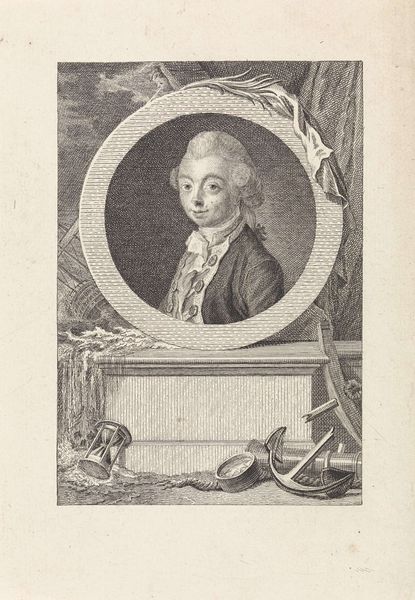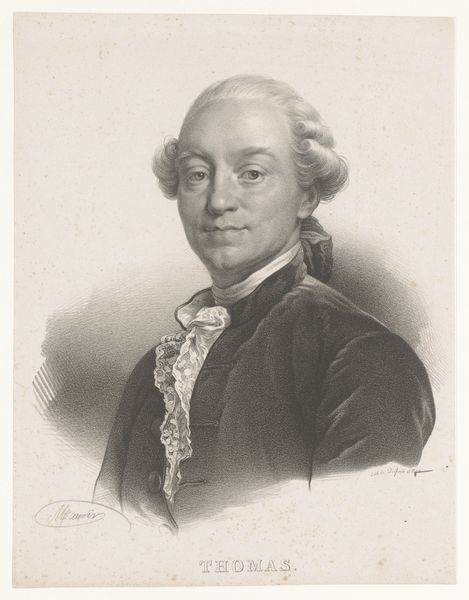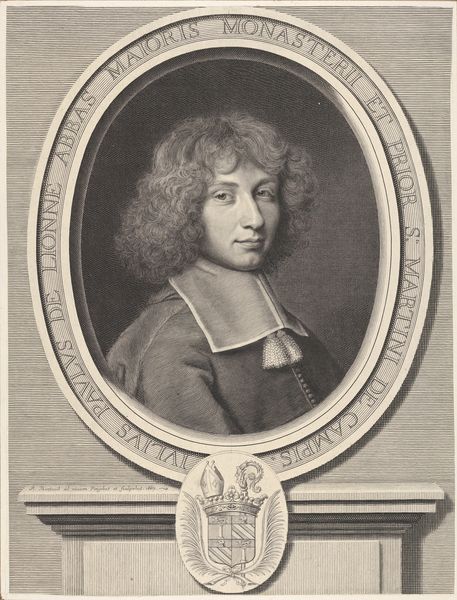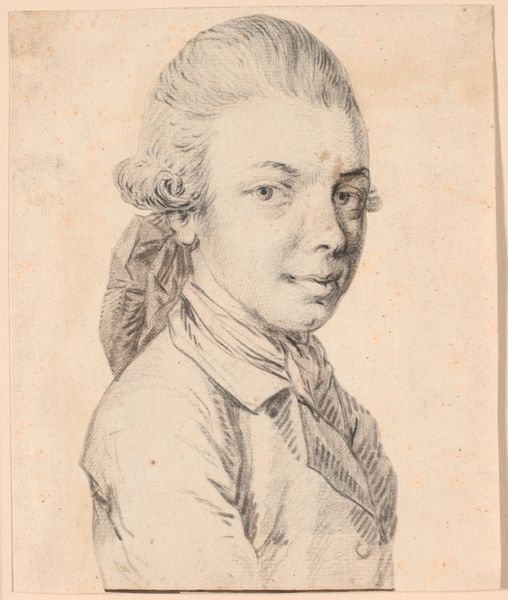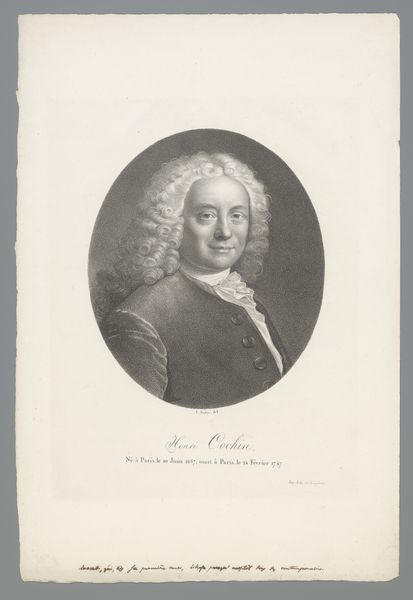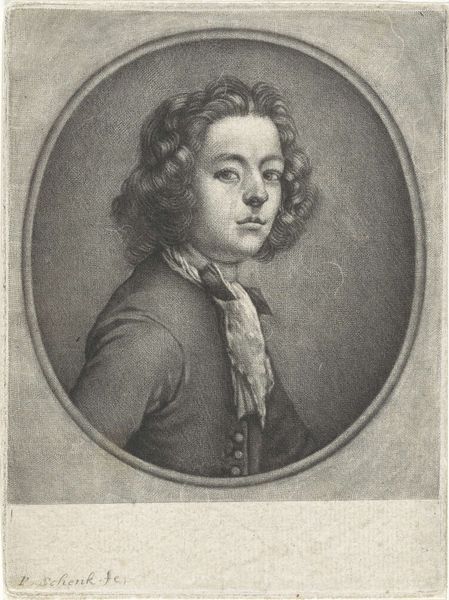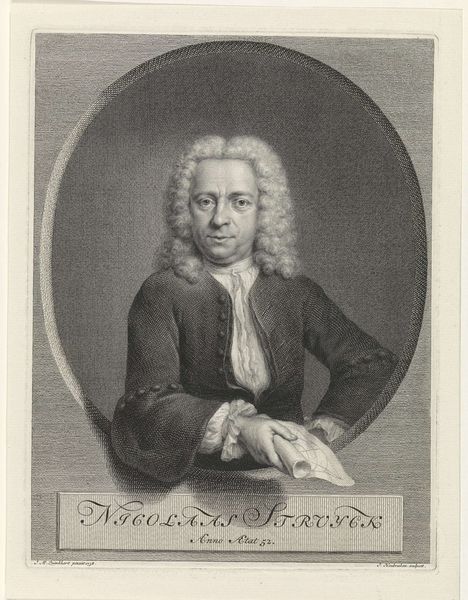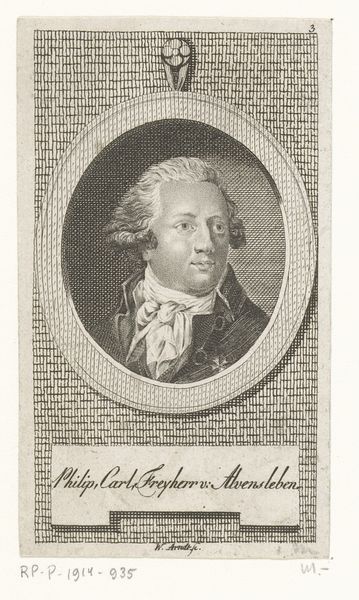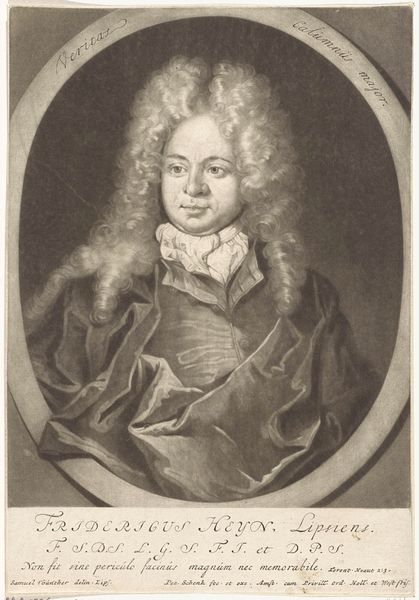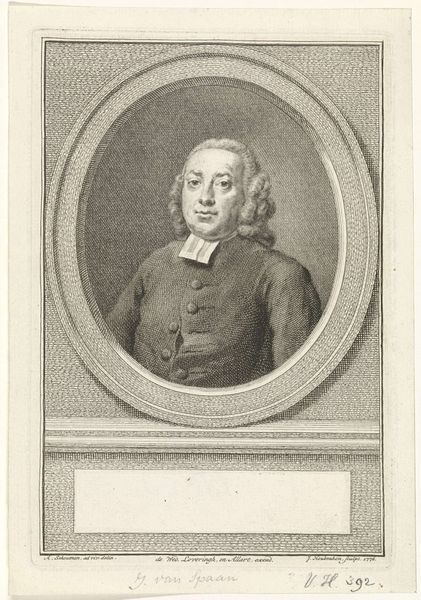
print, engraving
#
portrait
# print
#
engraving
#
rococo
Dimensions: height 405 mm, width 310 mm, height 495 mm, width 355 mm
Copyright: Rijks Museum: Open Domain
Curator: What a dreamy face. It almost feels as if he's pulled from the pages of a romance novel. There’s a melancholic beauty in his eyes that draws you in. Editor: Absolutely, it captures a certain air of the Rococo period. This engraving by Jean-Étienne Liotard, dating between 1753 and 1757, is a portrait of Henry Frederick, Duke of Cumberland, and part of the collection at the Rijksmuseum. Curator: An engraving! I'm so caught up in his eyes and expression, I completely forgot to notice how exquisitely the artist played with light and shadow. It gives so much depth to a black-and-white print. Editor: Indeed. The engraver meticulously rendered the Duke's lace collar and periwig; the subtleties convey both status and personality. You see a formal portrait meant to project power but also a human presence, almost vulnerable, that appeals to our contemporary sensibility. Curator: I wonder what was on his mind. Those dark shadows almost overshadow the musical sheets behind him. Perhaps it’s the music or events in his own life contributing to his contemplative mood. Editor: That touch of mystery adds layers of meaning, making the work endlessly interpretable. During this time, art was not just decorative but communicative—projecting ideals, societal status, and sometimes more nuanced personal traits to the wider world. It subtly manipulates the audience's perceptions of this royal figure. Curator: Perhaps all of those elements were at play. It is difficult to tell exactly the intention of the artist, and maybe there isn’t just one singular intention at play, which is quite the beauty of it. What an enduring enigma wrapped in delicate lines and shading! Editor: Exactly! What was created for the elite circles of the 18th century, this artwork now offers to us, in the 21st century, an opportunity for profound historical understanding.
Comments
rijksmuseum about 2 years ago
⋮
Jean-Etienne Liotard is famous for his pastel portraits, but he also made prints in which he often opted for an unusual technique. Here he worked in a highly systematic manner. He almost exclusively used horizontal, vertical and diagonal lines, which he applied with the aid of a ruler. It is a proof on which Liotard indicated with coloured chalk where he wanted to adapt the print.
Join the conversation
Join millions of artists and users on Artera today and experience the ultimate creative platform.
